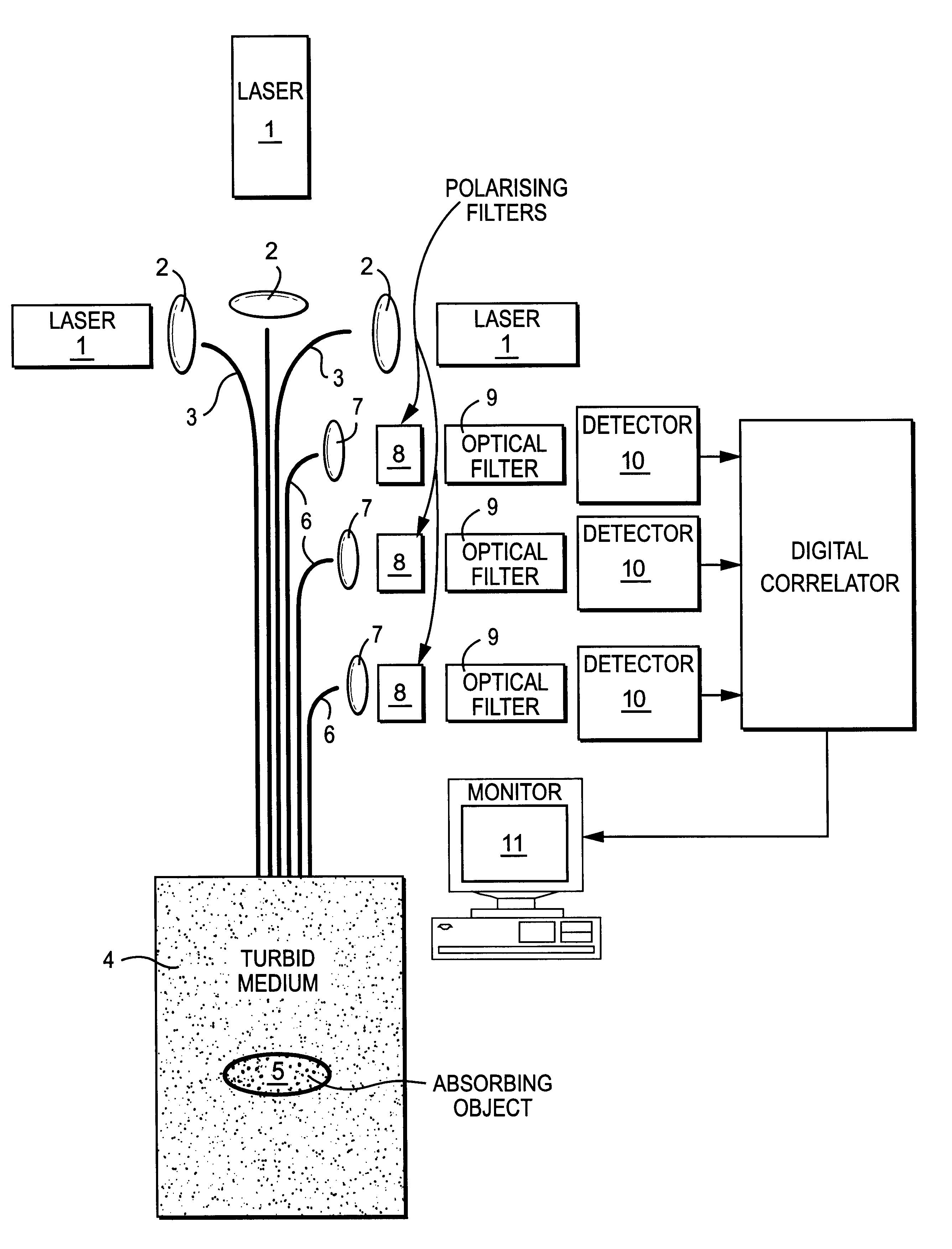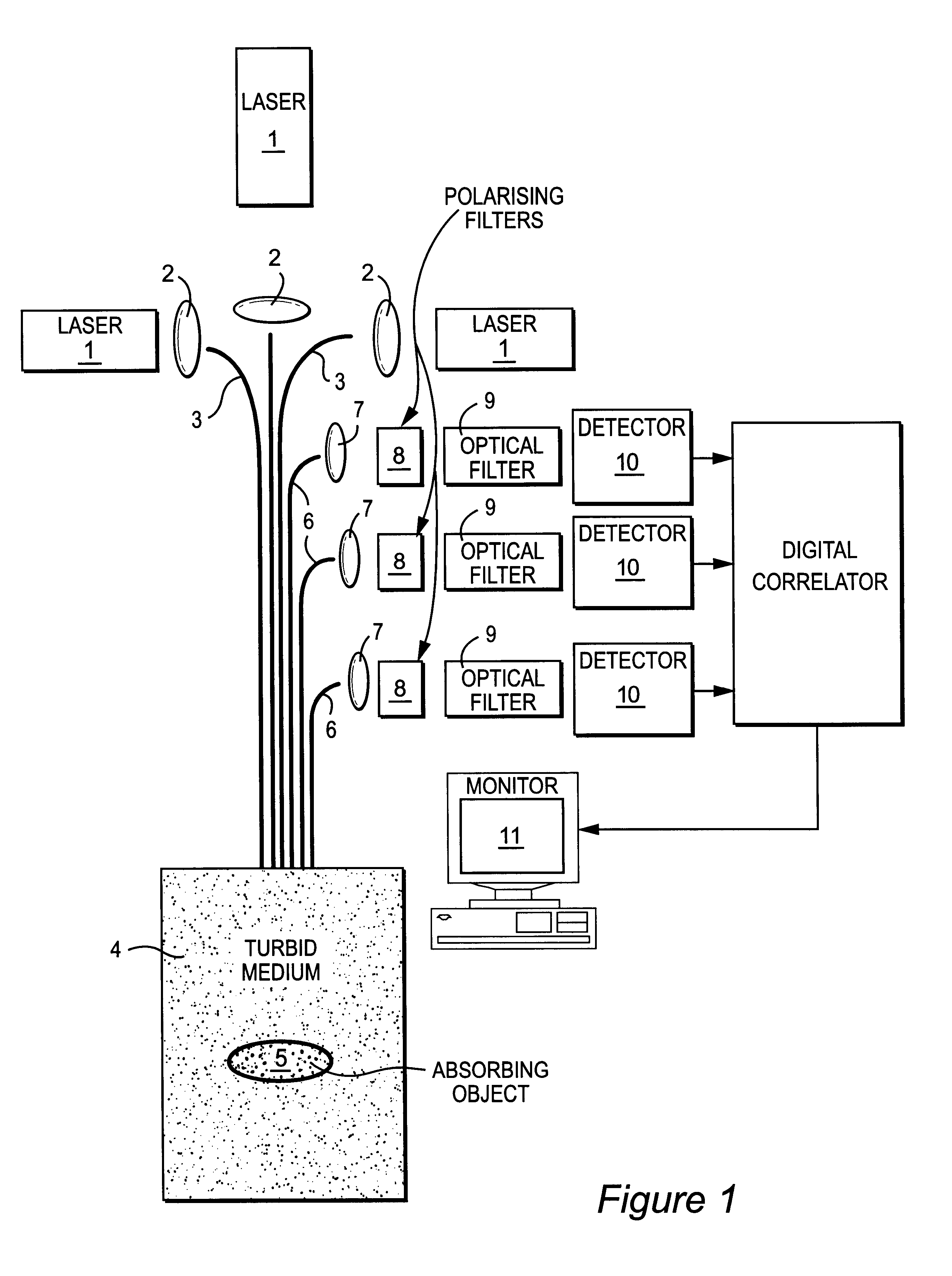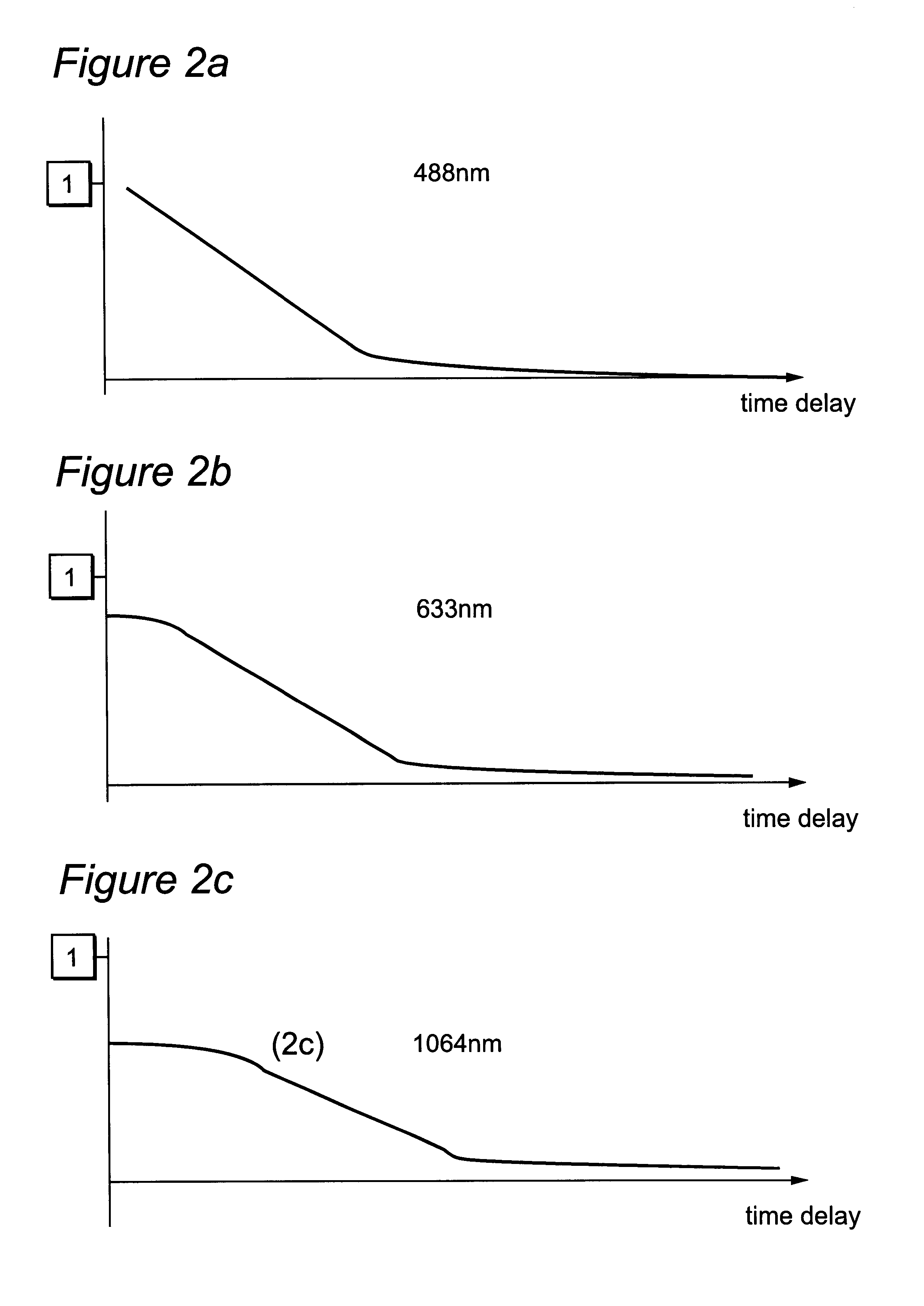Method and apparatus for detecting an object within a dynamic scattering media
a dynamic scattering media and object technology, applied in the field of methods and apparatus for detecting and/or imaging objects, can solve the problems of detectors only being able to detect for a very short period, acoustic imagine suffers from lack of spatial resolution, and the image resolution obtainable using time-of-flight imaging is thus limited
- Summary
- Abstract
- Description
- Claims
- Application Information
AI Technical Summary
Benefits of technology
Problems solved by technology
Method used
Image
Examples
Embodiment Construction
FIG. 1 shows an imaging apparatus comprising three lasers 1 operating at different wavelengths. The three lasers produce light wavelengths 488 nm (argon ion), 633 nm (helium neon) and 1064 nm (Nd:YAG) respectively, the light from each laser 1 having a single transverse and longitudinal mode. Optics 2 (an example of which is described in more detail below with reference to FIG. 6) couple light from each laser 1 into a single mode polarisation maintaining optical fibre 3. Light from each fibre 3 is launched into a turbid medium 4 within which is located an absorbing object 5.
Light scattered by the turbid medium 4 is collected by three optical fibres 6 which may have the same construction as the launch fibres 3. The collected light is collimated using farther optics 7 (an example of which is described in more detail below with reference to FIG. 7) and directed at polarising filters 8 and laser-line optical filters 9. Light transmitted by the laser-line filters 9 is monitored by detecto...
PUM
 Login to View More
Login to View More Abstract
Description
Claims
Application Information
 Login to View More
Login to View More - R&D
- Intellectual Property
- Life Sciences
- Materials
- Tech Scout
- Unparalleled Data Quality
- Higher Quality Content
- 60% Fewer Hallucinations
Browse by: Latest US Patents, China's latest patents, Technical Efficacy Thesaurus, Application Domain, Technology Topic, Popular Technical Reports.
© 2025 PatSnap. All rights reserved.Legal|Privacy policy|Modern Slavery Act Transparency Statement|Sitemap|About US| Contact US: help@patsnap.com



